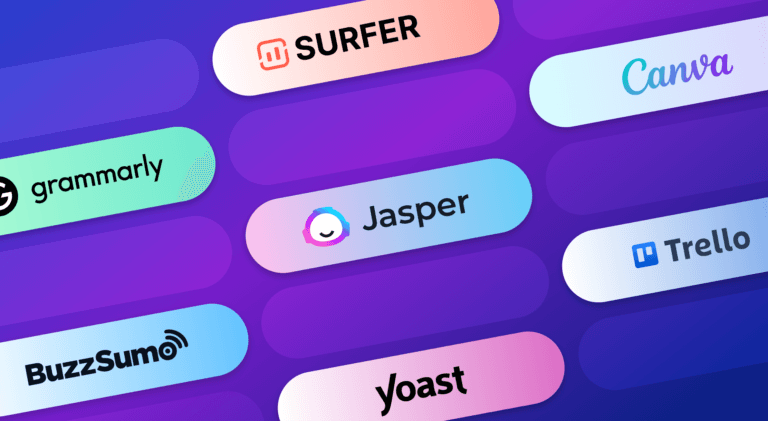7 Ad Gurus Share Secrets on How to Make Viral Content

Table of Contents
- What is Viral Content?
- Tips to Make Content Go Viral
- 7 Advertising Gurus’ Secrets To Viral Content
- Key Takeaways
- Conclusion
- FAQs
Have you ever wondered how to make viral content? As content marketers, it’s what we’re all going for. After all, what organization doesn’t want its content to be shared and enjoyed by thousands of people?
The good news is that achieving the ‘viral status’ is entirely possible. You don’t want to leave it to chance, but you also don’t have to be a content marketing specialist to develop viral content. You merely need to understand how viral content works. With that in mind, let us look at some tips to make content viral and secrets from 7 advertising gurus to make viral ads.
What is Viral Content?
Content that goes viral spreads quickly (like, well, a virus). It’s made to be circulated. People look at the range, like it, and share it on social media. Hundreds of thousands, if not millions, of people, engage with your material before you know it.
But, what kind of content can go viral? It may be anything: an image, a video, an essay, or even a clever slogan. It must be one-of-a-kind, shared, and memorable for all the right reasons. Companies face a significant challenge in capturing the attention of their target audience due to the sheer volume of Internet content. For many of these businesses, viral marketing promises a lot of attention in exchange for a small investment.
Previously, word-of-mouth was a standard method of disseminating firm information. On the other hand, the digital age provides businesses with new ways to connect with potential clients, such as ‘sharing’ on social media.
With viral marketing, material spreads like a virus from one person to the next, with consumers acting as brand advocates. Video, photos, and texts, frequently generate millions of shares throughout Facebook, Twitter, and the blogosphere.

Tips to Make Content Go Viral
If you’ve ever attempted to generate viral content, you know how difficult it can be.
You can develop great content, write passionately about what you love, and promote it tirelessly—and still not receive the result you want. Viral content creation is an art. Rather than giving up on having your message heard, try applying some tried-and-tested Internet marketing tactics for developing irresistibly shareable content that the pros utilize.
Your answer for how to make viral content is here. We’ve developed a list of tips to make content viral that will make your task easier and help you in getting desired results.
SEO is the key
Search engines, without a doubt, provide the most reliable and long-term traffic to websites. Identify potentially viral and low-competition keywords, and then optimize your content for these terms to make your content viral.
Various tools are available on the Internet for getting relevant keywords and optimizing your content for the search engine.
- Google Search Console
- Google Ads Keyword Planner
- BrightEdge
- Searchmetrics
Search results are provided in an ordered list, and the higher a site can rank on that list, the more visitors it will receive. For example, the top result for a typical search query will receive 40-60% of the overall traffic for that query, whereas the second and third results will receive much less traffic. Only a few percent of searchers go past the first page of results. As a result, even minor improvements in search engine rankings can increase visitors and, perhaps, business for a website.
Pay attention to the headlines
Headlines influence readers’ perceptions of your content. You’ll be surprised at how easy it is to use killer headlines to make your content go viral.
The title is one of the most crucial aspects of your content: it can make or destroy a story. So, to ensure that your readers stick with you from beginning to end, come up with a headline that will both spark readers’ interest and persuade them to continue reading. If you don’t have time to develop outstanding ideas for each blog article or need some help getting started, many great blog post title templates are available.

Allow your readers/viewers to leave comments
Comments provide excellent social proof, but they do not spread as quickly. People aren’t commenting on blogs as much as they used to because they have to keep returning to them. People make comments to be heard.
Take, for instance, Facebook. If someone posted a comment on your fan page or, even better, tagged a buddy in your post, their Facebook connections are likely to notice and engage in a conversation.
This discussion takes place on your site and all of these other people’s feeds.
- Use a vast comment area to provide outstanding social proof;
- Use user-generated input to improve the quality of your content, and
- Respond to your readers’ comments to sustain and strengthen the relationship.
Make use of lists
There’s something about lists that we find so appealing. If you’re interested in learning more about this strange relationship, read the New York Times article on why our brains adore lists.
Meanwhile, consider Buzzfeed, the king of viral content and the list post. As we can see from their most popular material, almost every post is a list of some kind.
What makes this particular post structure so effective? Lists make the person sharing appear brighter, they can be counted, and they frequently help solve difficulties. It’s no surprise that the BuzzFeed team is a huge admirer.
People watch pointless cat videos on the Internet because they feel something when they watch them – a sense of fun in a chaotic world, a connection to a cherished pet, or just the opportunity to laugh. The video of a cat about to pounce isn’t life-changing, meaningful, or even remotely significant, but it does generate emotion.
Visualize it
We need to incorporate intellectual images and infographics in our material to inspire outstanding interaction on our blog or social media posts. Visual content is used by about 55% of marketers to capture the attention of their target market. Compared to large blocks of text, graphical information gives your readers a more beautiful experience.
Content marketers create landing pages utilizing high-resolution graphics to portray emotions that readers can relate to. Images, videos, and extensive infographics are just a few of the visual elements you can employ to enhance your content. After a few paragraphs of text, you should use visuals and dynamic infographics to break up the structure of your material and captivate the reader. Although leveling up your visual game may necessitate a more significant time commitment on your part, it is a tried-and-true strategy employed by marketers to make content go viral.
The most current trend in creating viral content is authenticity, which acts as an emotional hook in and of itself. After customers complained that they didn’t want to see picture-perfect versions of life, the trend of influencers providing picture-perfect versions of life disappeared. Influencers are now sharing their hardships, life lessons, and day-to-day existence through videos and Instagram postings.
You may believe that creating a viral video is a risky endeavor, but there are a few things you can do to help your material take off. First, keep in mind that lengthier isn’t always better for videos. A mobile phone is most actively used to access social media, so you know that people are on the move while watching your video.
The secret to a good video is to rapidly attract viewers with a compelling title or attention-grabbing thumbnail image.
Make it crisp and to the point
Long-form articles have a lower chance of going viral than short and targeted material.
The great majority of viral content is only a few seconds long. On platforms like TikTok and Facebook, videos usually last between 30 seconds and one minute. If the video goes on for too long, the viewer may lose interest.
The same may be said for blogs. Unless you’re trying to build an all-in-one guide with infographics, keeping your text format short and tidy is crucial. Because humans have short attention spans, use subheadings, bullet points, and graphics to make your content scannable.
On the other hand, the long-form text has the competitive advantage of providing readers with more context and information. It is, however, not the most straightforward method of creating viral content.
7 Advertising Gurus’ Secrets To Viral Content
For a long time, content marketing has been a buzzword. Every content creator is on the lookout for making an ad viral. It’s no secret that the competition is fierce out there, with over 90% of companies adopting content marketing tactics to promote their products and services on the Internet.
When your content goes viral, it takes on a life of its own and introduces your business to a whole new audience that would otherwise be unavailable through regular channels. It may be a YouTube video, a blog post, a tweet, or nearly any other piece of material that is viewed, shared, and discussed.
The most crucial thing is to identify the popular platforms used by the people you wish to influence. Social media sites, for example, must be included on your list. Your postings will receive the maximum traction on Facebook, Twitter, and possibly YouTube.
Users spend more than two hours every day on social media, according to BroadbandSearch. They are, without a question, the most significant avenues for effectively communicating your message.
7 advertising gurus offer the best tips to make content viral.
1. Stephanie Sammons
Stephanie Sammons is the founder of Build Online Influence – a company that trains professionals, business owners, and entrepreneurs to use social media to promote their businesses. Her mantra for viral content creation is to not worry about going viral with your posts. Viral is a fleeting phenomenon that cannot be sustained. Concentrate on hitting singles and doubles instead. Strive to produce high-quality material and establish a reputation for it constantly.
2. Brian Honigman
Brian Honigman is a marketing consultant, speaker, and freelance writer. He’s worked with Dell, HubSpot, Citibank, Toyota, and Poppit and has written for Forbes, The Next Web, Mashable, and heaps of other publications. According to him, creating a blog post that will go viral is challenging. The goal of developing content to reach your specialized audience should not be to create a viral piece but rather to make relevant, original, and compelling information. It’s only a bonus if it resounds with others online to the point of getting viral.
3. Kristi Hines
Kristi Hines is a fantastic web marketer who works as a freelance writer, professional blogger, and ghostwriter. According to her, there are two methods for blog entries to go viral: luck and promotion. You write excellent material and get lucky when it is shared by someone with a large following, picked up by Lifehacker, or become famous on Reddit. Or, you publish a terrific piece of content and advertise it in every way you can think of, including email, social media ads, and so on. While the latter will take time and effort, it is the only surefire way to go viral.
4. Gregory Ciotti
Gregory Ciotti works at Help Scout, an invisible email support software for companies who care about their consumers. According to him, it’s impossible to make something go viral. However, using the ‘drip approach,’ as he calls it, is one way to fuel the fire. This is where you write an original piece and include a few quotes from industry leaders. The critical thing to remember is to have the kind of clients you want. You can see how he achieved it in his post on the New 4Ps of Marketing. The quotes don’t take center stage in the post, but they did help it gain traction because each person included (kindly) reposted it.
5. Stanford Smith
Stan Smith launched Pushing Social to help solopreneurs and scrappy underdogs conquer their niches through effective content marketing and publishing strategies. According to him, create a complete advertisement on a ‘Recursive’ subject. For example, ‘How to Use Twitter Like a Boss’ will attract Twitter users to retweet it. ‘How to Use Facebook to Grow Your Business’ will attract Facebook users who will Like.
6. Henri Junttila
Henri Junttila is the founder of Wake Up Cloud – a company that teaches you how to turn your hobby into a profitable business. According to him, the first step towards viral content creation is to Investigate what makes a post go viral. But, more importantly, consider why you want your blog post to go viral in the first place. Do you believe it will increase your readership? If that’s the case, why do you want a wider audience? What exactly are you attempting to achieve? Focus on sales and assisting others if you’re starting a business. Concentrate on the outcome and what is essential.
7. Neal Schaffer
Neal Schaffer is an expert in social media strategy, content marketing and the author of the fantastic book Maximize Your Social. According to him, the trick to making an ad go viral is to create something that is both resourceful and insightful, as well as ‘You.’ You must also allow your admirers to share your information with their networks.
Key Takeaways
- Viral content is online content that spreads quickly through social media networks, news websites, aggregators, email newsletters, and search engines.
- You can run a paid marketing campaign if you want, but it may not be necessary because everyone is sharing your content for free online. Consequently, you’ll be able to save money on marketing and increase your ROI.
- Your theme is central when it comes to how to make viral content. You want to develop content on a topic that’s trending right now. You’ll be able to ride the wave this way. And what’s the greatest technique to find hot topics? Google Trends is a tool that allows you to see what’s hot.
- When people see your content shared on Twitter, Facebook, and other social media sites, it’s your title that makes them want to click. While the content of your post is crucial, the title can make or break how well it performs.
- It’s easy to forget your introduction while creating a viral ad. On the other hand, people only read roughly 28% of a blog post. So, if you want your piece to go viral, you must grab readers’ attention quickly. This implies that your introduction should be captivating and intriguing.
Conclusion
It’s not easy to create viral content. Even if you follow all of the above recommendations, there’s no assurance that your work will become viral. There are, however, things you can do to improve your chances of creating viral content. Use these helpful hints to create viral content that your audience will enjoy and want to share with others.
Determine what motivates them and makes a piece of material ‘shareable.’ Examine instances of viral material created by people in your field and figure out what made it so successful. What can you learn from previous successful efforts, and how can you improve upon them?

FAQs
Any content widely spread around the Internet in a matter of hours or less is referred to as viral content. In other words, it’s information that quickly gets popular. From memes to news stories, any content can become viral.
You must first establish a goal. Determine what appeals to your target audience and create material with a distinctive ‘hook’ to attract their interest. Because viral content frequently has a visual component, try including a video, image, or GIF.
While some bought ads can go viral, there’s no assurance that you’ll create viral content if you execute a paid ad campaign. Focus on developing exciting content and doing paid ad campaigns if you have the marketing money to help enhance your chances of going viral.
Viral content allows you to reach new individuals quickly, convey your business message, and increase your trust. Furthermore, it is practically free advertisement when people share your material online. Isn’t free advertising enticing?
Facebook is sweetening its video creator offers, whether they’re viral video stars or media firms, by adding new tools to help them generate money through advertising and direct payments from Facebook users.
It’s not simply witty memes or a fast challenge video that goes viral. They might also be in the form of infographics or narratives. Anything that your audience responds positively to, as evidenced by the number of likes, shares, comments, and views it receives in a short period.
Latest Blogs
Explore how Google’s 2025 AI search updates triggered ranking chaos. Learn actionable strategies to adapt your SEO for AI Overviews, zero-click searches, and SERP volatility. Stay ahead now.
Learn how to rank on AI search engines like ChatGPT, Perplexity, and Gemini by optimizing your content for authority, structure, and relevance. Stay ahead in AI-driven search with this strategic guide.
Explore the best healthcare SEO services for your medical practice. Improve online visibility and effectively reach more patients in need of your services.
Get your hands on the latest news!
Similar Posts

Artificial Intelligence
5 mins read
Enhance Your Writing Efficiency: Must-Have Content Writing Tools for Marketers

Marketing
5 mins read
9 Key Strategies To Increase Twitter Reach

Marketing
6 mins read